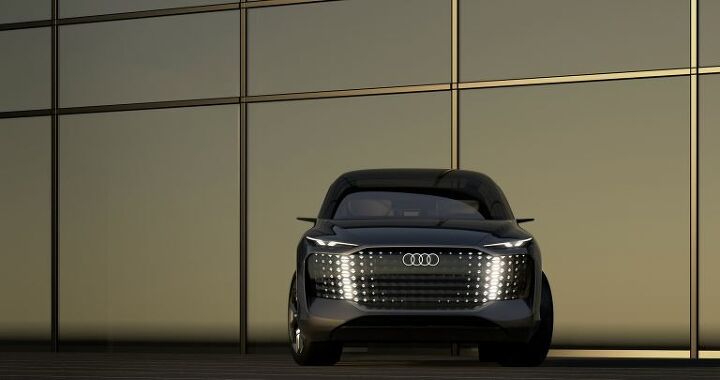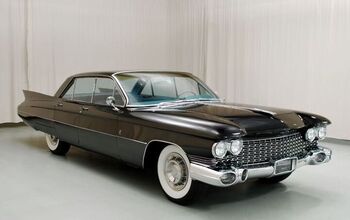Audi Urbansphere: A Trojan Horse

Back when everyone still bought into the hype surrounding self-driving cars, automakers were releasing concept vehicles framed as a “lounge on wheels.” The theory was that once autonomous vehicles hit the mainstream, companies would begin dropping futuristic models with swanky interiors because drivers would no longer be responsible for piloting the car for the duration of its journey. However, the public eventually learned that autonomous driving technologies had failed to progress as promised and would likely come with a host of restrictions plenty of drivers wouldn’t be interested in once the wrinkles had been ironed out.
But there are a whole host of markets to be tapped, the public has a relatively short-term memory, and there’s always a chance that some major headway was made during the last few years of development. So we’ve seen a resurgence of mobility talk from the industry, especially as it relates to all-electric vehicles. Case in point is the Audi Urbansphere — an autonomous concept vehicle designed for “Chinese megacities” but allegedly perfect for a metropolitan area near you.
“Systematically designed from the inside out, Audi has unveiled plans for the Audi urbansphere [sic] concept car. Designers and engineers initially created the Audi urbansphere for use in traffic-dense Chinese megacities, although the concept is also suitable for any other metropolitan center in the world,” the manufacturer explained. “In these urban areas, where personal space is in particularly short supply, the concept car offers the largest interior space of any Audi to date. It intelligently coordinates this with technologies and digital services that appeal to all the senses and offer a whole new level of experience.”
The Urbansphere is effectively a minivan (MPV to our European readers) and a clear evolution of the brand’s 2021 Grandsphere and Skysphere concepts. It’s an undeniably cool premise, embodying the best aspects of what self-driving can offer. But it remains difficult to imagine a world where such vehicles exist without there being massive changes to existing safety regulations and a meaningful leap forward in relevant technologies. Mapping, sensing hardware, and machine learning have all improved — it’s just not obvious they’ve reached the point where SAE Level 4 (or better) autonomous driving is realistic.
But concept cars only exist to foreshadow real products some of the time. Plenty take the stage as a way to draw attention and prove that the brand has an abundance of vision. The Urbansphere seems to fit more neatly into the latter category — though we wouldn’t be shocked to see some of its features and design elements eventually appearing in future production models. Sadly, they probably won’t be the kind of things you’re actually interested in.
From Audi:
“To make e-mobility even more attractive, we think about it holistically and from the customer’s needs,” says [Audi chairman] Markus Duesmann. More than ever before, it is not just the product that is decisive, but the entire ecosystem. That is why Audi is creating a comprehensive ecosystem with services for the entire car. The Audi urbansphere concept also offers everyone onboard a wide range of options to use that freedom to provide a highly-personalized in-car experience: communication or relaxation, work or withdrawal into a private sphere as desired. As such, it transforms from being strictly an automobile into an “experience device.'”
Thanks to Audi’s own options and the ability to integrate digital services from other providers, the possibilities are nearly endless. These can be used to access a wide range of services related to the current trip. The vehicle also takes care of everyday tasks that go beyond the ride itself – such as making dinner reservations or shopping online from the car. In addition, the autonomous Audi urbansphere concept picks up its passengers at home and independently takes care of finding a parking space and charging the battery.
Customized infotainment offerings are also available, such as the seamless integration of onboard music and video streaming services. Audi will also offer customers exclusive perks, including access to concerts, cultural events, and sporting events based on their individual preferences.
The whole industry is leaning hard into the whole “goods-as-a-service” concept and is eager to charge customers for features via numerous subscription schemes. The vehicle is becoming less important than how companies can use it to package services in a way that’s the most financially lucrative. That means full-time connectivity will be essential on vehicles like the Urbansphere with the manufacturer having more control over the car than the person whose garage it lives in.
Automakers have loads of industry-sanctioned euphemisms for making vehicles more like smartphones and less like traditional automobiles and Audi utilized several in its press release (e.g. e-mobility). But the ultimate goal remains the same, regardless of the terminology: Leveraging internet connectivity to harvest customer data which can then be sold and recycled to create targeted marketing to stream right back into the vehicle. This also highlights the true value of autonomy — a totally captive audience.
As for the Urbansphere. It’s another autonomous luxury concept with suicide doors and two rows of seats that can be made to face each other. Despite there being oodles of room, occupancy is limited to four individuals to maximize legroom. Those not interested in socializing can bring down a privacy screen that isolates the person’s eyes and ears from the rest of the cabin. The back seats also come with the kind of adjustments one would expect on a La-Z-Boy recliner, including an entertainment mode for when passengers want to watch something collaboratively on the retractable, transparent, OLED screen that drops from the glass ceiling (or the individual screens embedded in the front headrests).
There’s a water dispenser that comes with its own cups, a swiveling center console, fun exterior lighting displays (including a red-carpet mode), and the obligatory retractable steering wheel and pedals. The opulence is overkill. But it does showcase what can be done with modern technologies, assuming autonomous driving manages to join them. It’s just unfortunate that so many of the good ideas are being undermined by invasive technologies you frankly couldn’t pay me to have installed on my car.
The most glaring example was Audi proudly proclaiming that the concept qualifies as a “wellness zone” due to some of the “innovative digital options that emerged in no small part through input from the co-creation process with Chinese customers.” This includes an adaptive program that uses facial scans and voice analysis to determine how passengers are feeling in real-time. Audi framed this as “stress detection” and said the system offers personalized suggestions for relaxation via meditation apps or other features linked to the various screens found in the vehicle. Though it has to be said that China’s growing number of traffic enforcement data centers have been wanting automakers to implement full-time monitoring of vehicle occupants for some time — making the concept a bit of a trojan horse.
[Images: Audi]

Consumer advocate tracking industry trends and regulations. Before joining TTAC, Matt spent a decade working for marketing and research firms based in NYC. Clients included several of the world’s largest automakers, global tire brands, and aftermarket part suppliers. Dissatisfied, he pivoted to writing about cars. Since then, he has become an ardent supporter of the right-to-repair movement, been interviewed about the automotive sector by national broadcasts, participated in a few amateur rallying events, and driven more rental cars than anyone ever should. Handy with a wrench, Matt grew up surrounded by Detroit auto workers and learned to drive by twelve. A contrarian, Matt claims to prefer understeer and motorcycles.
More by Matt Posky
Latest Car Reviews
Read moreLatest Product Reviews
Read moreRecent Comments
- Hi There I dig the boxy retro looks, I don't care if it looks like a Rivian which looks like an old Scout. I'm skeptical about the price, as others have mentioned, my guess is when this ships, in 2027, it'll be $90k. I do like the range extender generator on board. Until we get better battery technology, it's either that or a plug-in hybrid for me. Full EV is fine in an urban environment with access to lots of chargers. Though, the irony there is, once everyone has an EV, finding an open charger will be impossible. So many negatives in the EV future.
- ToolGuy I know some 5 year olds looking for work.
- Jalop1991 Ah. Update: Scout employee has confirmed that the width of the Scout EV Concepts is 79.9 inches without mirrors (and confirmed that it's 91.1" with mirrors). So their marketing department wasn't ready for this launch at all. I seriously doubt this will launch in 2027, or that any of their products will be less than $90K, or that any of them will be available with some sort of combustion engine of any kind.
- Lillian With the Global acceptance and mass increase in active users of Digital currency, comes its many challenges with the most worrisome probably being stolen funds and even emptying your balance to 0.00 USD and this exactly was my experience four days ago after my balance of $110,000 was cleared. Glad I had known about Space Spy Recovery through a close friend whom they helped earlier and once I contacted them, they deployed their high tech expertise and recovered my money back. Contact them for all Crypto solutions: addresses: soacespy@hackermail.com. Telegram: @spacespy65; Skype: live: cid.2b75b0cf1ce9bf69; WhatsApp: +1 (657) 543-6038;
- Kwik_Shift_Pro4X I 🤣😆😂 at the price







































Comments
Join the conversation
Just when I thought I’ve seen the greatest extent of bovine excrement in the guise of marketing material..there’s this!
"How am I doing today, Alexa?"